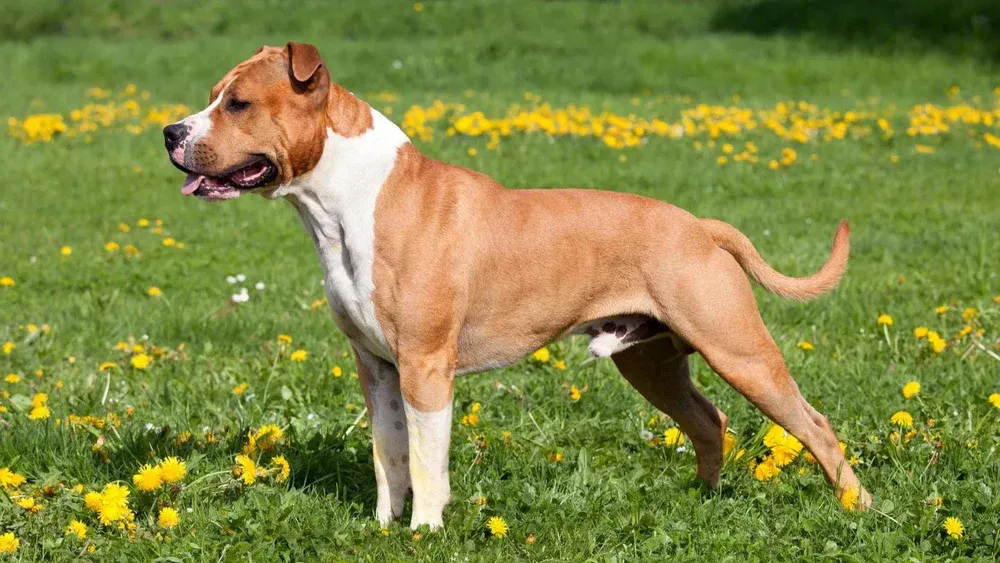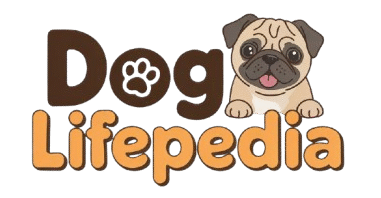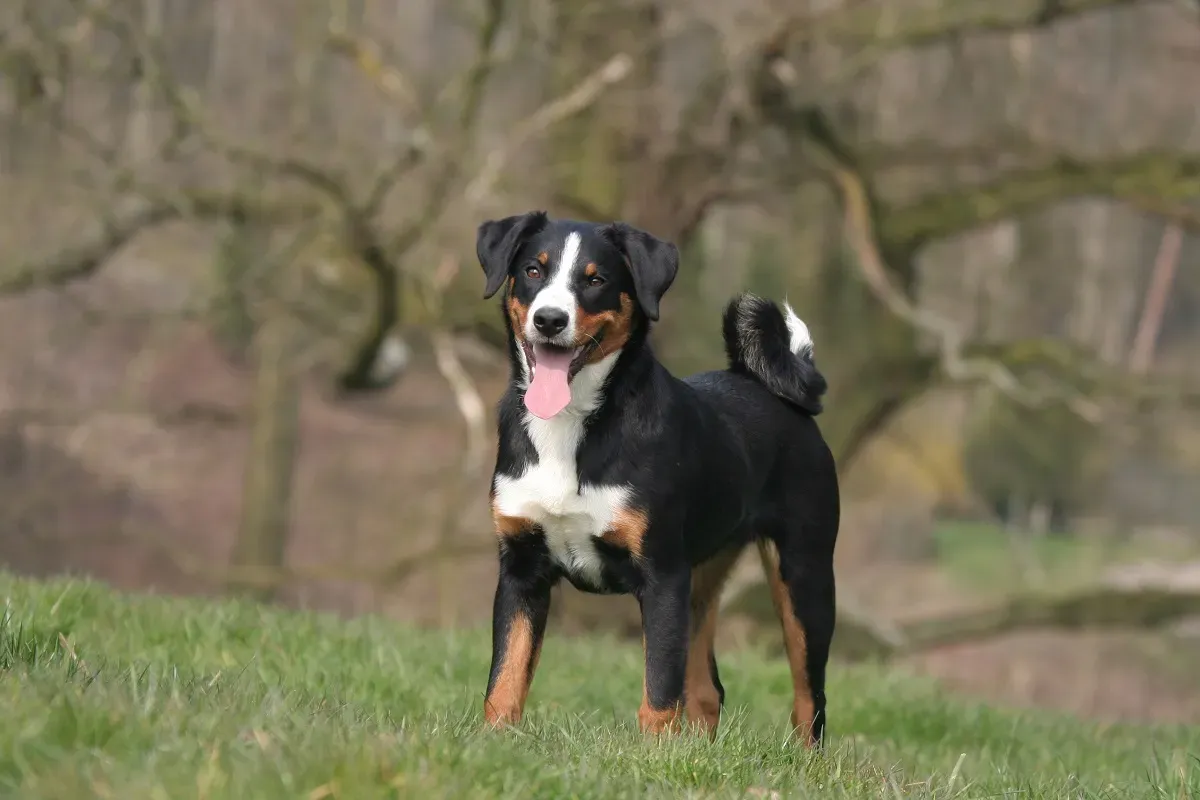
American Pit Bull Terrier
Heena
June 19, 2025

The American Pit Bull Terrier (APBT) is one of the most misunderstood breeds in the world. Originating in the United States from bull-baiting dogs, this breed has evolved into a loyal, athletic, and loving companion. Despite controversy, Pit Bulls are cherished in many American households and are slowly gaining recognition in the UK, where breed-specific legislation has limited their numbers.
Known for their strength, intelligence, and deep affection for humans, the APBT is a dog that requires the right owner—one who can provide guidance, socialization, and commitment.
Breed Overview
Breed Name: American Pit Bull Terrier
Group: Not recognized by the AKC (but recognized by UKC as a Terrier-type breed)
Origin: United States
Height: 17–21 inches (43–53 cm)
Weight: 30–60 lbs (13–27 kg)
Life Expectancy: 12–16 years
Temperament: Loyal, courageous, affectionate, energetic
Breed Colors & Markings
The APBT has a short, glossy coat that comes in a wide variety of colors:
- Black
- White
- Brindle
- Blue
- Red
- Fawn
- Tan
- Brown
Markings can be patches of color on the chest, face, or paws. Their coat is low maintenance and their muscular build gives them a striking, athletic appearance.
Temperament & Personality
Despite their reputation, APBTs are friendly, loyal, and eager to please. They often exhibit:
- Affection toward family: Very loving and people-oriented
- Gentleness with children: Known as “nanny dogs” for their care and tolerance
- Confidence and courage: Originally bred for tenacity and strength
- High energy and enthusiasm: Need lots of activity and interaction
- Protective nature: Loyal to their people but not naturally aggressive to humans
They are not inherently dangerous. Behavior is shaped largely by training, socialization, and environment.
Communication & Intelligence
The APBT is a smart and expressive breed:
- Highly trainable: Learns quickly and responds well to positive reinforcement
- Expressive body language: Uses tail wagging, eye contact, and physical closeness
- Vocal but not yappy: Will “talk” with grunts, huffs, and playful growls
- Emotionally attuned: Sensitive to owner moods and tone
Training should start young, focusing on consistency, praise, and social exposure.
Health & Lifespan
Generally a healthy breed, the APBT can live 12–16 years with proper care. Common health issues include:
- Hip dysplasia
- Allergies (environmental or food-related)
- Skin conditions (especially due to their short coat)
- Thyroid dysfunction
- Heart disease in rare cases
Routine vet visits, a clean diet, and exercise will keep them in peak health.
Grooming Needs
Their short coat makes grooming simple:
- Brushing: Once a week to remove loose hair and spread natural oils
- Bathing: As needed, usually once a month
- Ear care: Check and clean weekly to prevent infections
- Nail trimming: Every 2–3 weeks
- Dental hygiene: Regular brushing to prevent tartar buildup
Their skin can be sensitive, so use mild shampoos and keep an eye on any irritation.
Exercise Requirements
APBTs are very active dogs and need daily physical and mental stimulation:
- Walks or runs: At least 60 minutes daily
- Tug, fetch, and agility: Great ways to burn energy
- Interactive toys: Puzzle feeders and chew toys help prevent boredom
- Social play: Best with supervision, especially with other dogs
Without enough activity, they may become destructive or anxious.
Training & Socialisation
Training is essential for this breed, especially because of public misconceptions:
- Start early: Puppy training and socialization are crucial
- Obedience basics: Sit, stay, come, and leash walking
- Positive reinforcement: Praise, treats, and consistency
- Avoid harsh methods: These can lead to fear or reactivity
- Dog socialization: Supervised play with known dogs helps build manners
Socialization helps them remain calm and confident in various situations.
Nutrition & Diet
To fuel their muscular build and energy:
- High-protein, balanced food: Choose premium dog food designed for active breeds
- 2 meals daily: Prevents bloating and stabilizes energy
- Monitor weight: Keep an eye on portion sizes
- Supplements: Fish oil or joint support may help
- Fresh water: Always available
Consult your vet for dietary adjustments based on age, weight, and activity level.
What to Expect as an Owner
Owning an APBT means:
✅ Living with a highly affectionate, loyal companion
✅ Committing to daily exercise and training
✅ Advocating for your dog in a sometimes-judgmental world
✅ Socializing early and often
✅ Staying informed and prepared to counter breed myths
They do best in homes with experienced owners, a secure yard, and plenty of attention.
Is the American Pit Bull Terrier Right for You?
You’re likely a good match if:
✔️ You’re active and can provide regular exercise
✔️ You believe in training and socialization
✔️ You’re ready to advocate for your dog in public
✔️ You have experience with strong, intelligent breeds
✔️ You’re looking for a loving, loyal companion who’s full of heart
If you’re not prepared for training, or you prefer a more independent or low-energy breed, the APBT may not be the best fit.
Final Thoughts
The American Pit Bull Terrier is a smart, affectionate, and athletic breed with a big heart. Though often misunderstood, they have the potential to be among the most devoted family dogs when raised in a loving, structured environment.
With the right owner, the APBT is not a symbol of fear, but of love, loyalty, and resilience.

